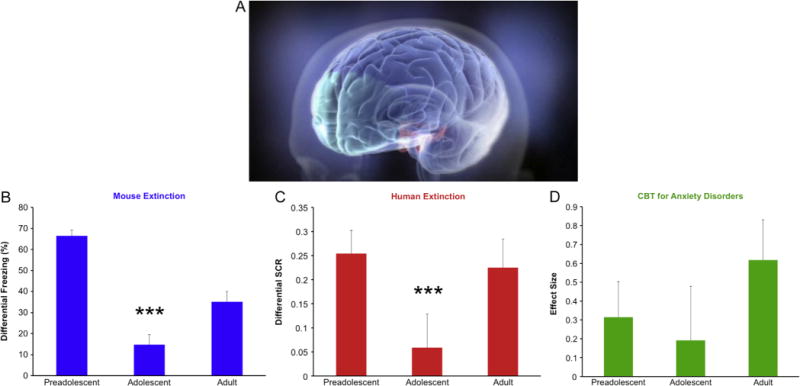Figure 1.

Fear extinction learning and improvement of anxiety by age. (A) Representative illustration of frontolimbic circuitry, highlighting the earlier developing limbic areas (red) and later developing prefrontal cortex (green) suggested by the imbalance model of adolescence (Reproduced with permission from McPhee) (9). (B) Adolescent (P29) mice show diminished extinction learning relative to adults (P70) and preadolescents (P23). (C) Human adolescents (mean age: 13.9 ± 1.47 years, n = 25) show diminished fear extinction learning as indexed by skin conductance responses (SCR) compared with adults (mean age: 22.8 ± 2.57 years, n = 28) and children (mean age: 8.8 ± 1.78 years, n = 30) (4). (D) A similar pattern emerges when the effect size of cognitive behavioral therapy (CBT) relative to placebo is calculated separately for children (CBT: children, mean age: 9.46 ± 1.36 years, n = 90; adolescents, mean age: 14.34 ± 1.74 years, n = 49; placebo: children, mean age: 9.20 ± 1.31 years, n = 50; adolescents, mean age: 14.55 ± 1.64 years, n = 26) (1) and adults (7). All results presented as mean ± SEM. ***p < .001 compared with other groups.
